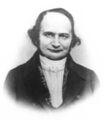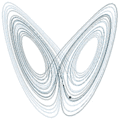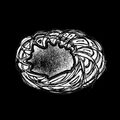Template:Selected anniversaries/December 10: Difference between revisions
No edit summary |
No edit summary |
||
| Line 1: | Line 1: | ||
<gallery> | <gallery> | ||
|| *** DONE: Pics *** | |||
File:Yanghui triangle.gif|link=Rod calculus (nonfiction)|1262: First known use of [[Rod calculus (nonfiction)|Yui's triangle]] to detect and prevent [[crimes against mathematical constants]]. | File:Yanghui triangle.gif|link=Rod calculus (nonfiction)|1262: First known use of [[Rod calculus (nonfiction)|Yui's triangle]] to detect and prevent [[crimes against mathematical constants]]. | ||
| Line 42: | Line 44: | ||
||1906: Walter Henry Zinn born ... nuclear physicist who was the first director of the Argonne National Laboratory from 1946 to 1956. He worked at the Manhattan Project's Metallurgical Laboratory during World War II, and supervised the construction of Chicago Pile-1, the world’s first nuclear reactor, which went critical on December 2, 1942, at the University of Chicago. At Argonne he designed and built several new reactors, including Experimental Breeder Reactor I, the first nuclear reactor to produce electric power, which went live on December 20, 1951. Pic. | ||1906: Walter Henry Zinn born ... nuclear physicist who was the first director of the Argonne National Laboratory from 1946 to 1956. He worked at the Manhattan Project's Metallurgical Laboratory during World War II, and supervised the construction of Chicago Pile-1, the world’s first nuclear reactor, which went critical on December 2, 1942, at the University of Chicago. At Argonne he designed and built several new reactors, including Experimental Breeder Reactor I, the first nuclear reactor to produce electric power, which went live on December 20, 1951. Pic. | ||
||1907: The worst night of the Brown Dog riots in London, when 1,000 medical students clash with 400 police officers over the existence of a memorial for animals that have been vivisected. | ||1907: The worst night of the Brown Dog riots in London, when 1,000 medical students clash with 400 police officers over the existence of a memorial for animals that have been vivisected. Pic: statues. | ||
||1920: Mathematician Alfred William Goldie born. He will work in ring theory where he introduced the notion of the uniform dimension of a module, and the reduced rank of a module. He is well known for Goldie's theorem, which characterizes right Goldie rings. Indeed, his Independent obituary described him as the "Lord of the Rings". Pic: http://www-history.mcs.st-and.ac.uk/Biographies/Goldie_Alfred.html | ||1920: Mathematician Alfred William Goldie born. He will work in ring theory where he introduced the notion of the uniform dimension of a module, and the reduced rank of a module. He is well known for Goldie's theorem, which characterizes right Goldie rings. Indeed, his Independent obituary described him as the "Lord of the Rings". Pic: http://www-history.mcs.st-and.ac.uk/Biographies/Goldie_Alfred.html | ||
| Line 56: | Line 58: | ||
File:Gasbuggy Nuclear device.jpg|link=Project Gasbuggy (nonfiction)|1967: [[Project Gasbuggy (nonfiction)|Project Gasbuggy]] underground nuclear test detonation in rural northern New Mexico. Its purpose was to determine if nuclear explosions could be useful in fracturing rock formations for natural gas extraction. | File:Gasbuggy Nuclear device.jpg|link=Project Gasbuggy (nonfiction)|1967: [[Project Gasbuggy (nonfiction)|Project Gasbuggy]] underground nuclear test detonation in rural northern New Mexico. Its purpose was to determine if nuclear explosions could be useful in fracturing rock formations for natural gas extraction. | ||
||1968: Japan's biggest heist, the still-unsolved "300 million yen robbery", is carried out in Tokyo. | ||1968: Japan's biggest heist, the still-unsolved "300 million yen robbery", is carried out in Tokyo. Pic: aerial photo. | ||
||1973: Wolf V. Vishniac dies ... microbiologist and academic. Mars. Pic search yes: https://www.google.com/search?q=Wolf+V.+Vishniac | ||1973: Wolf V. Vishniac dies ... microbiologist and academic. Mars. Pic search yes: https://www.google.com/search?q=Wolf+V.+Vishniac | ||
| Line 68: | Line 70: | ||
||1998: Wang Ganchang dies ... nuclear physicist. He was one of the founding fathers of Chinese nuclear physics, cosmic rays and particle physics. Pic. | ||1998: Wang Ganchang dies ... nuclear physicist. He was one of the founding fathers of Chinese nuclear physics, cosmic rays and particle physics. Pic. | ||
||2009: Vladimir Teplyakov dies ... | ||2009: Vladimir Teplyakov dies ... experimental physicist known for his work on particle accelerators. Together with I.M. Kapchinsky, he invented the principle of the radio-frequency quadrupole (RFQ), which revolutionized the acceleration of low-energy charged particle beams. Pic. | ||
||2010: John Fenn dies ... chemist and academic, Nobel Prize laureate. | ||2010: John Fenn dies ... chemist and academic, Nobel Prize laureate. Pic. | ||
||2011: Ernst Paul Specker dies ... mathematician. Much of his most influential work was on Quine’s New Foundations, a set theory with a universal set, but he is most famous for the Kochen–Specker theorem in quantum mechanics, showing that certain types of hidden variable theories are impossible. Pic. | ||2011: Ernst Paul Specker dies ... mathematician. Much of his most influential work was on Quine’s New Foundations, a set theory with a universal set, but he is most famous for the Kochen–Specker theorem in quantum mechanics, showing that certain types of hidden variable theories are impossible. Pic. | ||
Revision as of 08:26, 10 December 2019
1262: First known use of Yui's triangle to detect and prevent crimes against mathematical constants.
1198: Polymath Ibn Rushd (Averoess) dies. He wrote on logic, Aristotelian and Islamic philosophy, theology, the Maliki school of Islamic jurisprudence, psychology, political and Andalusian classical music theory, geography, mathematics, and the mediæval sciences of medicine, astronomy, physics, and celestial mechanics.
1452: Mathematician, astronomer, astrologer, priest, maker of astronomical instruments, and professor Johannes Stöffler born.
1684: Isaac Newton's derivation of Kepler's laws from his theory of gravity, contained in the paper De motu corporum in gyrum, is read to the Royal Society by Edmond Halley.
1804: Mathematician and academic Carl Gustav Jacob Jacobi born. He will make fundamental contributions to elliptic functions, dynamics, differential equations, and number theory.
1815: Mathematician and writer Ada Lovelace born. She will do pioneering work in symbolic languages for machine processes, developing what will later be called computer programs for Charles Babbage's early mechanical general-purpose computer, the Analytical Engine.
1831: Physicist and academic Thomas Johann Seebeck dies. He discovered the thermoelectric effect.
1959: Chrome Plover, the famous musical electroplating ensemble, demonstrates new controller units.
1967: Project Gasbuggy underground nuclear test detonation in rural northern New Mexico. Its purpose was to determine if nuclear explosions could be useful in fracturing rock formations for natural gas extraction.
1989: Animated Lorenz system diagram celebrates the life and work of Ada Lovelace.
2014: The Eel receives news from informants.
2017: Signed first edition of Shell stolen from the New MIA in New Minneapolis, Canada by agents of the criminal mathematical function Gnotilus.











